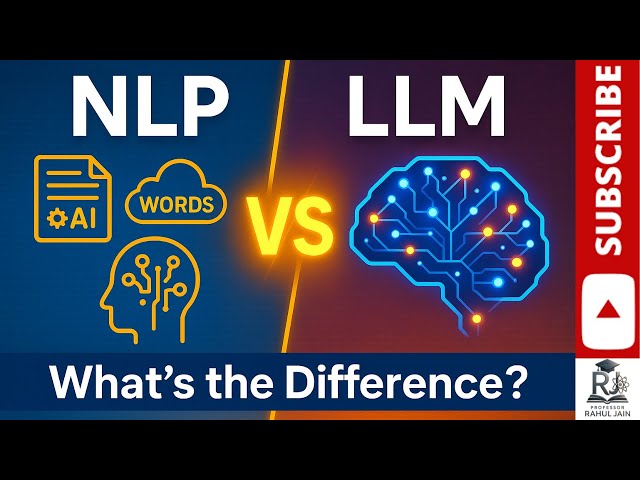Type: Article -> Category: AI What Is
Unlocking the Power of Natural Language Processing (NLP)
Transforming Communication and Data Analysis

Publish Date: Last Updated: 10th November 2025
Author: nick smith- With the help of CHATGPT
Natural Language Processing (NLP), a branch of artificial intelligence (AI), focuses on enabling machines to understand, interpret, and respond to human language. From virtual assistants and chatbots to real-time translation and sentiment analysis, NLP is redefining how humans interact with machines—and how businesses unlock value from data.
This article explores what NLP is, how it works, its wide-ranging applications, the challenges it faces, and what the future holds.
What is Natural Language Processing (NLP)?
At its core, NLP bridges the gap between human communication and computer systems. It allows machines to process, analyze, and generate human language in ways that are meaningful. By leveraging algorithms, large datasets, and machine learning models, NLP converts unstructured data—like spoken conversations, social media posts, or medical notes—into structured, actionable insights.
Key Subfields of NLP:
- Speech Recognition – Converting spoken language into text, powering voice assistants and transcription tools.
- Sentiment Analysis – Detecting emotions and opinions behind words, often used in customer service and brand monitoring.
- Machine Translation – Translating text or speech between languages (e.g., Google Translate, DeepL).
- Text Summarization – Condensing long documents into concise summaries while retaining core meaning.
- Conversational AI – Enabling meaningful interactions through chatbots and virtual assistants like Siri, Alexa, or Google Assistant.
How Does NLP Work?
NLP combines computational linguistics, machine learning, and deep learning to understand and generate human language. The process usually involves several stages:
1. Text Preprocessing
Before analysis, raw text must be cleaned and prepared:
- Tokenization – Splitting text into words or sentences.
- Lemmatization/Stemming – Reducing words to their root form (“running” → “run”).
- Part-of-Speech Tagging – Identifying nouns, verbs, adjectives, etc.
- Stop Word Removal – Filtering out common but uninformative words (“the,” “and”).
2. Feature Extraction
Transforming text into formats machines can analyze:
- Bag of Words (BoW) – Counting word frequency without context.
- TF-IDF (Term Frequency–Inverse Document Frequency) – Highlighting important words relative to a dataset.
- Word Embeddings – Representing words as vectors (e.g., Word2Vec, GloVe) to capture meaning and context.
3. Model Training
Machine learning and deep learning models (like BERT, GPT, and LLaMA) learn from vast datasets to classify text, generate responses, or predict meaning.
4. Post-Processing
Refining outputs using error correction, ranking, and user feedback to ensure accuracy and relevance.
Applications of NLP Across Industries
1. Customer Service & Virtual Assistants
NLP powers chatbots and AI agents that resolve queries, provide instant support, and operate around the clock—cutting costs while improving customer satisfaction.
2. Healthcare
From analyzing patient records to voice-based medical assistants, NLP extracts key insights from unstructured data, supports diagnosis, and enables more personalized care.
3. Finance
Banks and traders use NLP to scan financial reports, news, and social media for market signals. Chatbots also streamline customer service and fraud detection.
4. Marketing & Social Media Monitoring
Brands analyze customer sentiment, track online conversations, and measure campaign impact in real time—helping them adapt strategies quickly.
5. Education
EdTech platforms employ NLP for automated essay grading, student feedback, and adaptive learning experiences tailored to individual progress.
Challenges in NLP
Despite remarkable progress, NLP faces several hurdles:
- Ambiguity & Context – Language is nuanced; sarcasm, idioms, and slang remain difficult for AI to interpret.
- Bias in Data – If training datasets contain biased content, NLP systems risk reproducing harmful stereotypes or skewed outputs.
- Multilingual Limitations – High-resource languages dominate, leaving many underrepresented languages with weaker NLP tools.
- Data Privacy & Ethics – Handling sensitive conversations or medical data requires strict compliance and responsible AI practices.
The Future of NLP
The next wave of NLP will be driven by large language models (LLMs), real-time multimodal systems (text, speech, images), and advances in reasoning and personalization. Expect to see:
- Smarter Virtual Assistants – More natural, context-aware conversations.
- Cross-Language Accessibility – Breaking barriers for global communication.
- Healthcare Transformation – NLP aiding early detection of conditions through voice and text patterns.
- Ethical AI Initiatives – Greater focus on fairness, transparency, and inclusivity.
As NLP matures, it will increasingly blur the line between human and machine communication—making interactions more seamless, intuitive, and globally connected.
Conclusion
Natural Language Processing is reshaping how we live, work, and communicate. By unlocking the power of language, NLP enables businesses to extract insights from data, enhances customer experiences, and opens doors to new possibilities in healthcare, education, and beyond.
As the technology advances, ensuring fairness, inclusivity, and responsible deployment will be key to maximizing NLP’s potential. The next era of communication will not just be powered by words—it will be powered by intelligent, language-aware AI systems.
NLP on YouTube

NLP vs LLM Explained | Key Differences, Applications & Future of AI
YouTube Channel: Professor Rahul Jain

🔥NLP Engineer Salary in 2025 | AI Career Insights #shorts #simplilearn
YouTube Channel: Simplilearn

Natural Language Processing (NLP) – Text and Language Understanding
YouTube Channel: Microsoft Reactor

AI Chatbots: NLP & Emotional Intelligence
YouTube Channel: IBM Technology
Latest AI Articles
AI Questions and Answers section for Unlocking the Power of Natural Language Processing (NLP): Transforming Communication and Data Analysis
Welcome to a new feature where you can interact with our AI called Jeannie. You can ask her anything relating to this article. If this feature is available, you should see a small genie lamp above this text. Click on the lamp to start a chat or view the following questions that Jeannie has answered relating to Unlocking the Power of Natural Language Processing (NLP): Transforming Communication and Data Analysis.
Be the first to ask our Jeannie AI a question about this article
Look for the gold latern at the bottom right of your screen and click on it to enable Jeannie AI Chat.
Type: Article -> Category: AI What Is










